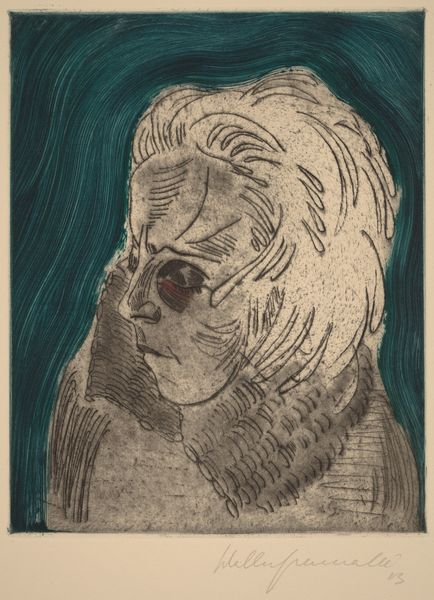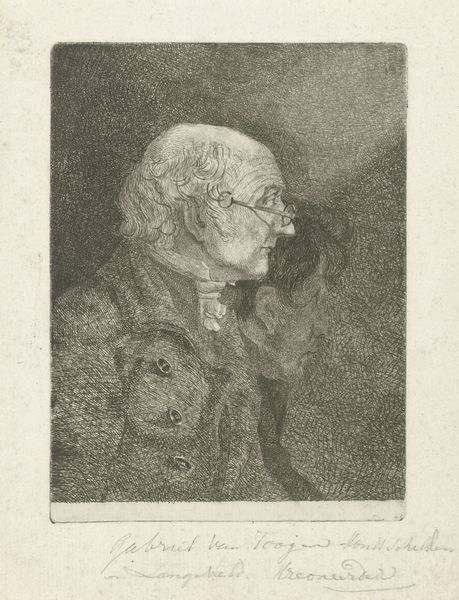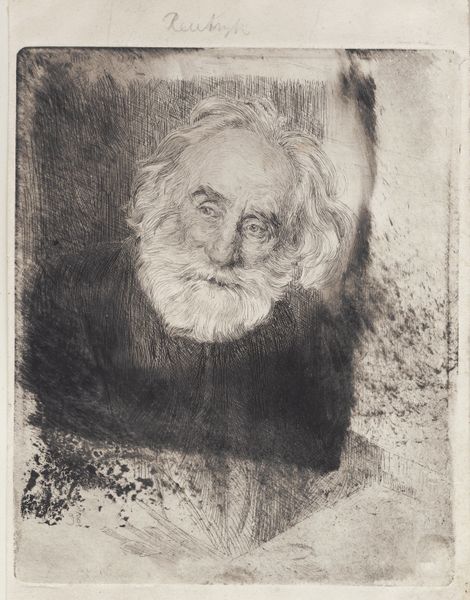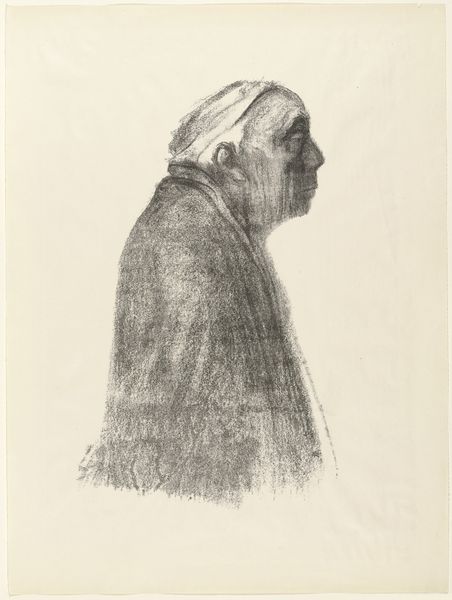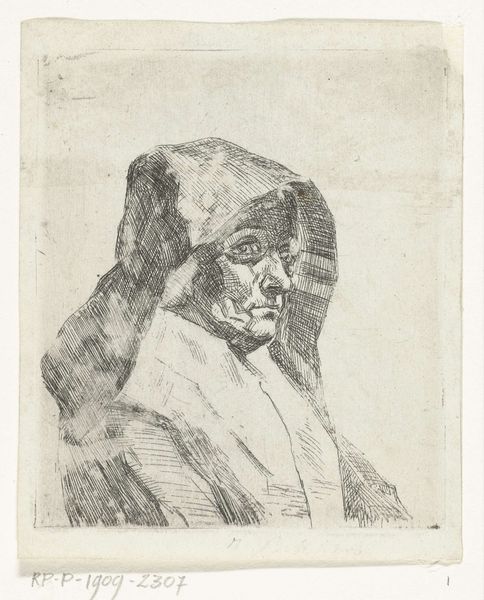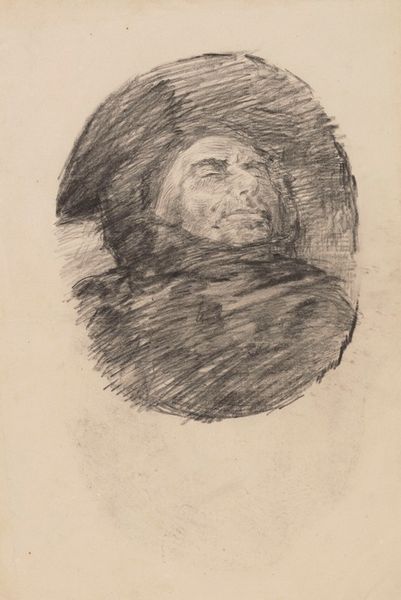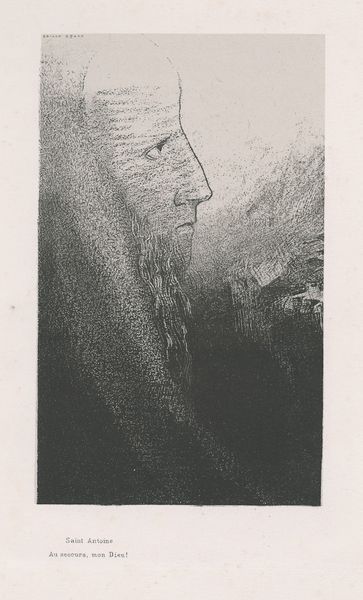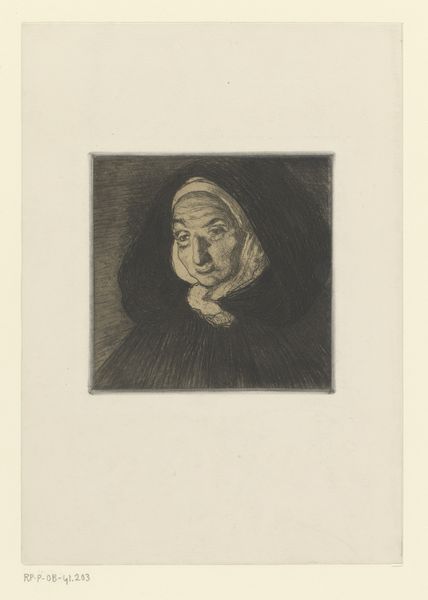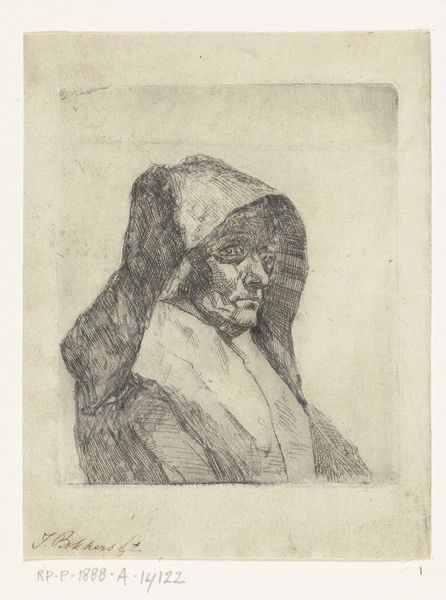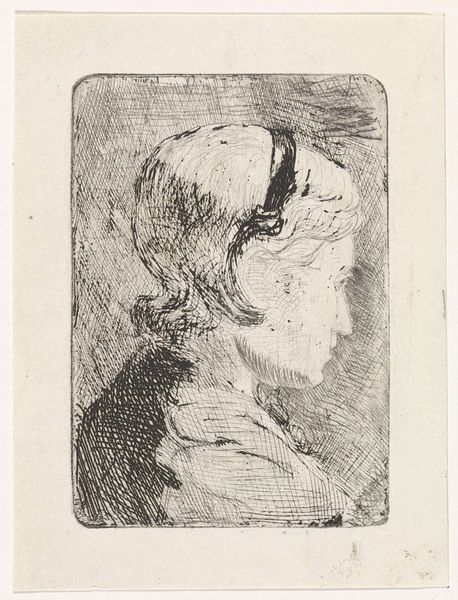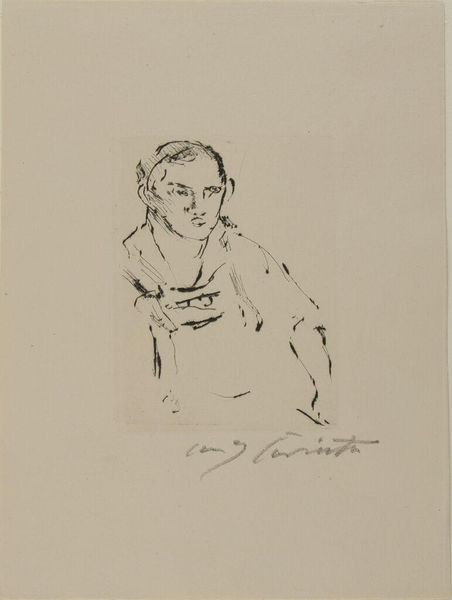
print, etching
#
portrait
# print
#
etching
#
german-expressionism
#
expressionism
Copyright: Public domain
Editor: Here we have Walter Gramatté’s 1924 etching, "Etching from the series 'The Face'". The subject's gaze is so intense, and the lines are quite angular; it feels almost confrontational. What do you see in this piece? Curator: It’s striking, isn't it? Considering it was created in 1924, amidst the social and political turmoil of post-World War I Germany, I view this not just as a portrait, but a powerful statement on the psychological impact of war. The harsh lines and almost mask-like quality of the face suggest a fractured identity. Look at how the subject averts their gaze, perhaps hinting at trauma or disillusionment. Does that resonate with you? Editor: Definitely. It’s as though the person is withdrawing, shielding themselves from something. And the etching technique—the scratchy lines—amplifies that sense of unease. Curator: Precisely. German Expressionism, the movement to which Gramatté belonged, sought to express inner emotional realities rather than depict the external world objectively. Consider, too, the limited color palette, it speaks volumes about the bleakness of the era and perhaps a loss of innocence. What is the overall statement of that combination in the historical context of art at that time? Editor: So, it's a portrait, yes, but also a reflection of the collective anxieties of the time? The work pushes past personal identity, it symbolizes a greater commentary. Curator: Exactly! Gramatté provides us with a window into the anxieties and challenges experienced by many during a turbulent time in history. Art can be a powerful tool for social commentary. Editor: I never thought of it quite that way, but I understand now how the context really shapes how we read the piece.
Comments
No comments
Be the first to comment and join the conversation on the ultimate creative platform.
